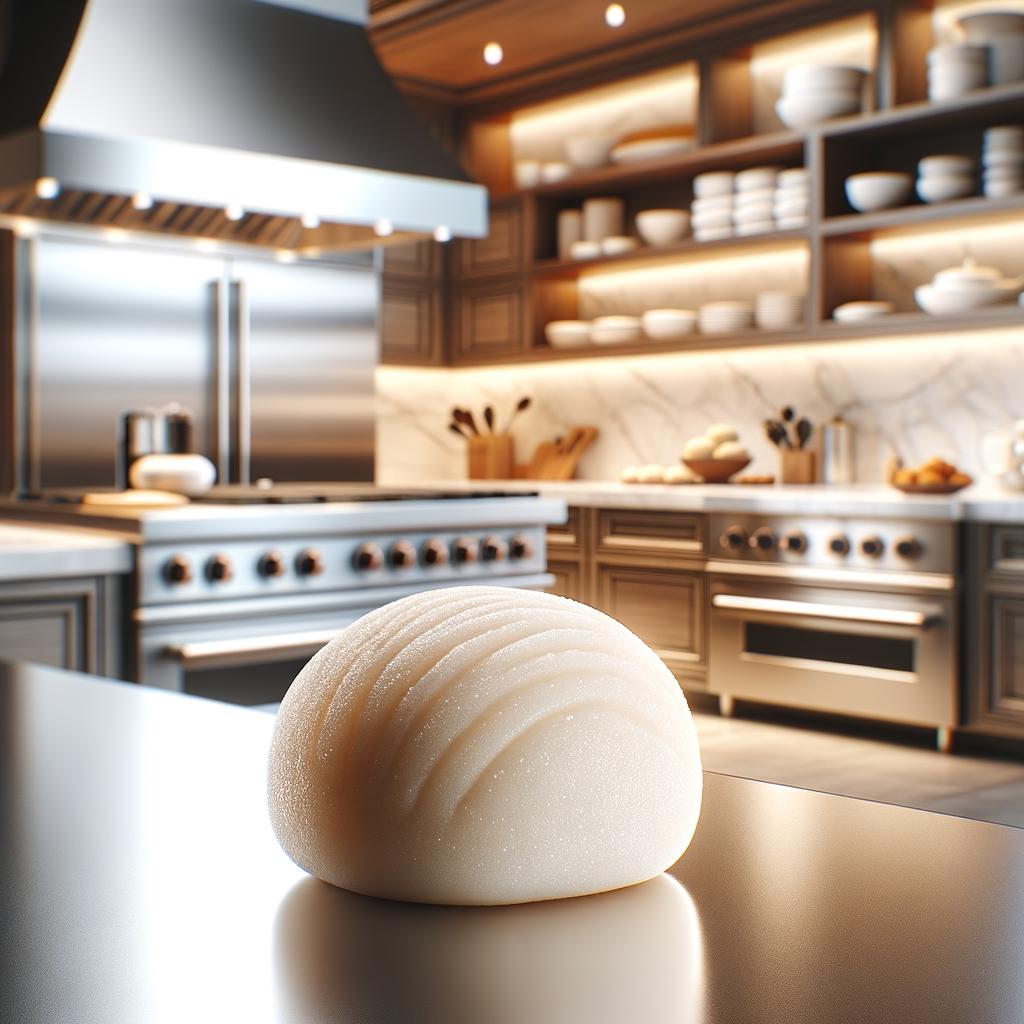Mochi

Description
Mochi, a delightful and versatile ingredient, is a type of Japanese rice cake made from mochigome, a short-grain glutinous rice. It presents a unique contrast between its smooth, snowy exterior and its chewy, sticky interior. Its flavor profile is subtly sweet, allowing it to harmonize beautifully with a variety of other ingredients. Mochi's distinct chewiness, known as 'mochi-mochi' in Japanese, sets it apart from other rice-based dishes and ingredients. Its transformative nature – from a humble grain of rice to a delightful delicacy – is what makes it truly enchanting.
Primary Uses
Mochi is a versatile ingredient that plays a starring role in both sweet and savory dishes across Japanese cuisine. It's used in traditional sweets like 'daifuku', a mochi ball filled with sweet red bean paste, and 'sakura mochi', a pink-colored mochi wrapped in a pickled cherry leaf. It's also a key component in 'ozoni', a traditional soup served during the Japanese New Year. Outside of the culinary world, mochi holds a significant place in Japanese culture and is often used in offerings and ceremonies due to its sacred connotation.
History
Mochi's history is as rich and intriguing as its texture. It dates back to the Yayoi period (300 BC - 300 AD) in Japan when rice cultivation was first introduced. Originally, mochi was a food for the gods and was offered at religious rituals and ceremonies. The tradition of making mochi, known as 'mochitsuki', involves a labor-intensive process that strengthens community bonds. Over time, mochi has evolved from a sacred food to a beloved treat enjoyed year-round, with special emphasis during the New Year. One charming folklore tells of a rabbit on the moon pounding mochi, a story often told during the autumn moon viewing festival.
Nutritional Information
Mochi is not just a delicious treat, but it also offers a range of nutritional benefits. It's a good source of complex carbohydrates, providing sustained energy. It also contains small amounts of protein and fiber. Compared to regular rice, mochi has a lower glycemic index, meaning it doesn't spike blood sugar levels as much. However, due to its sticky texture, there's a risk of choking if not chewed properly, especially among the elderly and young children. Despite this, mochi remains a beloved food, its nutritional profile only adding to its allure.

